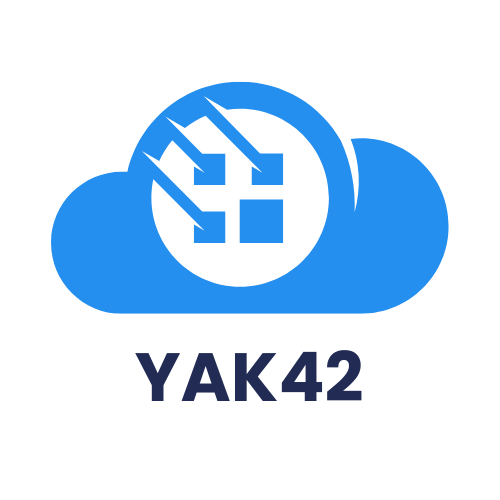Table of Contents
ToggleIn a world where software is as essential as morning coffee, cloud containers are the secret ingredient that keeps everything brewing smoothly. Imagine trying to juggle a dozen tasks while balancing on a unicycle—chaotic, right? That’s what managing applications without cloud containers feels like. These nifty little packages simplify deployment, scaling, and management, making developers’ lives a whole lot easier.
Cloud containers are like the Swiss Army knives of the tech world. They wrap up everything an application needs to run—code, libraries, and dependencies—into a neat little box. This means developers can focus on what really matters: creating amazing apps that users love. So, if you’re ready to ditch the chaos and embrace a more efficient way of working, it’s time to dive into the world of cloud containers. Your future self will thank you (and maybe even send you a thank-you card).
Overview of Cloud Containers
Cloud containers are essential in modern software development. They package applications with all necessary components, including code, libraries, and dependencies. This approach simplifies the deployment and scaling of applications, providing significant benefits for developers.
Developers can run cloud containers across various environments. They ensure consistency, allowing applications to perform reliably whether in testing, production, or anywhere else. This cross-environment functionality reduces compatibility issues, fostering a smoother development process.
Cloud containers enhance resource efficiency. Compared to traditional virtual machines, they use fewer system resources due to their lightweight nature. This advantage permits multiple containers to run on a single host, maximizing server utilization.
Scalability is another key feature. Developers can quickly scale applications up or down based on demand. This elasticity supports a responsive workflow, helping organizations meet changing user needs efficiently.
Numerous orchestration tools facilitate container management. Kubernetes and Docker Swarm are popular choices that automate deployment and scaling processes. These tools streamline management, allowing developers to focus on enhancing application functionality rather than infrastructure concerns.
Establishing a cloud container strategy can lead to a more agile development process. Instances of faster deployments and reduced time to market become possible through this approach. Organizations adopting cloud containers find themselves better equipped to respond to evolving technological landscapes.
Benefits of Cloud Containers
Cloud containers offer numerous advantages that enhance software development processes significantly. Their features simplify deployment, scaling, and management, providing immense value to developers.
Scalability
Scalability represents a core benefit of cloud containers. Developers can swiftly scale applications to accommodate fluctuating demands. When traffic spikes occur, increasing the number of containers is possible without extensive changes to the underlying architecture. Such flexibility allows teams to manage resources efficiently and respond quickly to user needs. They can also deploy additional containers in minutes, ensuring that applications remain responsive and available. Organizations that prioritize scalability gain a competitive edge in today’s fast-paced digital environment.
Cost Efficiency
Cost efficiency is another major advantage of cloud containers. By maximizing server resource utilization, organizations reduce overall expenses. Multiple containers can run on a single host, which decreases the need for additional physical servers. Containerization also streamlines maintenance efforts, lowering operational costs over time. Organizations can adjust their resource allocation based on actual usage, which prevents overspending on unused capacity. Overall, leveraging cloud containers contributes to a more economically friendly approach to application deployment and management.
Use Cases for Cloud Containers
Cloud containers play a vital role in various scenarios within modern software development. Their flexibility and efficiency enable organizations to adopt innovative approaches across different practices.
Microservices Architecture
Microservices architecture benefits greatly from cloud containers. Each microservice operates as an independent unit, allowing teams to develop and deploy them separately. Containers package these microservices along with their dependencies, ensuring consistency across environments. As a result, developers can quickly scale individual services based on demand, enhancing overall performance. Container orchestration tools like Kubernetes facilitate the management of these microservices, streamlining deployment and resource allocation. This approach improves maintainability and accelerates the delivery of new features, ultimately supporting agile workflows.
DevOps Practices
DevOps practices integrate seamlessly with cloud containers. Teams utilize containers to standardize development environments, reducing discrepancies between testing and production settings. Continuous integration and continuous deployment (CI/CD) pipelines benefit from this standardization, achieving faster release cycles. Automated testing and deployment processes leverage containers’ lightweight nature, enabling quick validation of code changes. Collaboration improves as developers and operations teams work together more effectively using containerized applications. The result is a more agile development process that enhances software quality and meets user demands promptly.
Popular Cloud Container Platforms
Many organizations leverage cloud container platforms to enhance their application deployment and management processes. Two of the most popular platforms are Docker and Kubernetes.
Docker
Docker simplifies the creation and management of containers. It packages applications with their dependencies into isolated units, promoting consistency across various environments. Developers appreciate Docker’s user-friendly interface and extensive library of images, which speeds up the development cycle. This platform enables rapid deployment, allowing teams to focus on building and iterating rather than configuration. Organizations can run multiple containers on a single host, maximizing server resource usage while minimizing operational costs. Docker’s integration with orchestration tools like Kubernetes further enhances its capabilities, streamlining complex containerized application management.
Kubernetes
Kubernetes excels at managing containerized applications at scale. It automates deployment, scaling, and operation across clusters of hosts. By distributing containers across a cluster, Kubernetes ensures high availability and efficient resource utilization. This platform supports self-healing mechanisms, which automatically restart failed containers or replace them, maintaining application uptime. Developers find its robust orchestration features vital for managing microservices architectures. Kubernetes supports a vast ecosystem of extensions and tools, increasing its functionality for specific use cases and organizational needs. Organizations that adopt Kubernetes benefit from improved scalability and a more agile infrastructure.
Challenges with Cloud Containers
Cloud containers present numerous advantages, but they also come with distinct challenges that organizations need to navigate. Recognizing these challenges ensures better implementation and overall success in utilizing cloud containers.
Security Concerns
Security remains a top concern for organizations using cloud containers. Sensitive data can become vulnerable if proper security measures are not in place. Container isolation reduces some risks, yet it doesn’t eliminate them completely. Attackers can exploit weaknesses in container or orchestration tools, leading to breaches. Regular updates and patching are essential to protect containers from known vulnerabilities. Tools that provide security scanning help identify potential threats during the development lifecycle, increasing confidence in the perceived security posture. Maintaining compliance with industry standards adds another layer of complexity that organizations must address to ensure robust container security.
Complexity in Management
Managing cloud containers can involve significant complexity. Organizations often face challenges in orchestrating various containers, especially in multi-cloud environments. Tools such as Kubernetes provide functionalities for scaling and load balancing, yet they introduce their own learning curves. Configuration management and monitoring become essential components of effective management, requiring skilled personnel to handle them. Without proper management practices, organizations may encounter challenges in maintaining application performance and availability, negatively impacting user experience. Automating deployment processes can mitigate some of this complexity, but establishing a sound management strategy is crucial for achieving seamless operations.
Conclusion
Cloud containers are transforming the landscape of software development by providing a streamlined approach to application deployment and management. Their ability to enhance scalability and resource efficiency empowers organizations to adapt quickly to changing demands. As developers embrace cloud containers they unlock the potential for faster release cycles and improved collaboration across teams.
While challenges exist particularly around security and management complexity the benefits far outweigh the drawbacks. By adopting robust practices and leveraging orchestration tools like Docker and Kubernetes organizations can navigate these challenges effectively. Ultimately investing in cloud containers not only optimizes workflows but also positions businesses to thrive in an increasingly dynamic technological environment.







